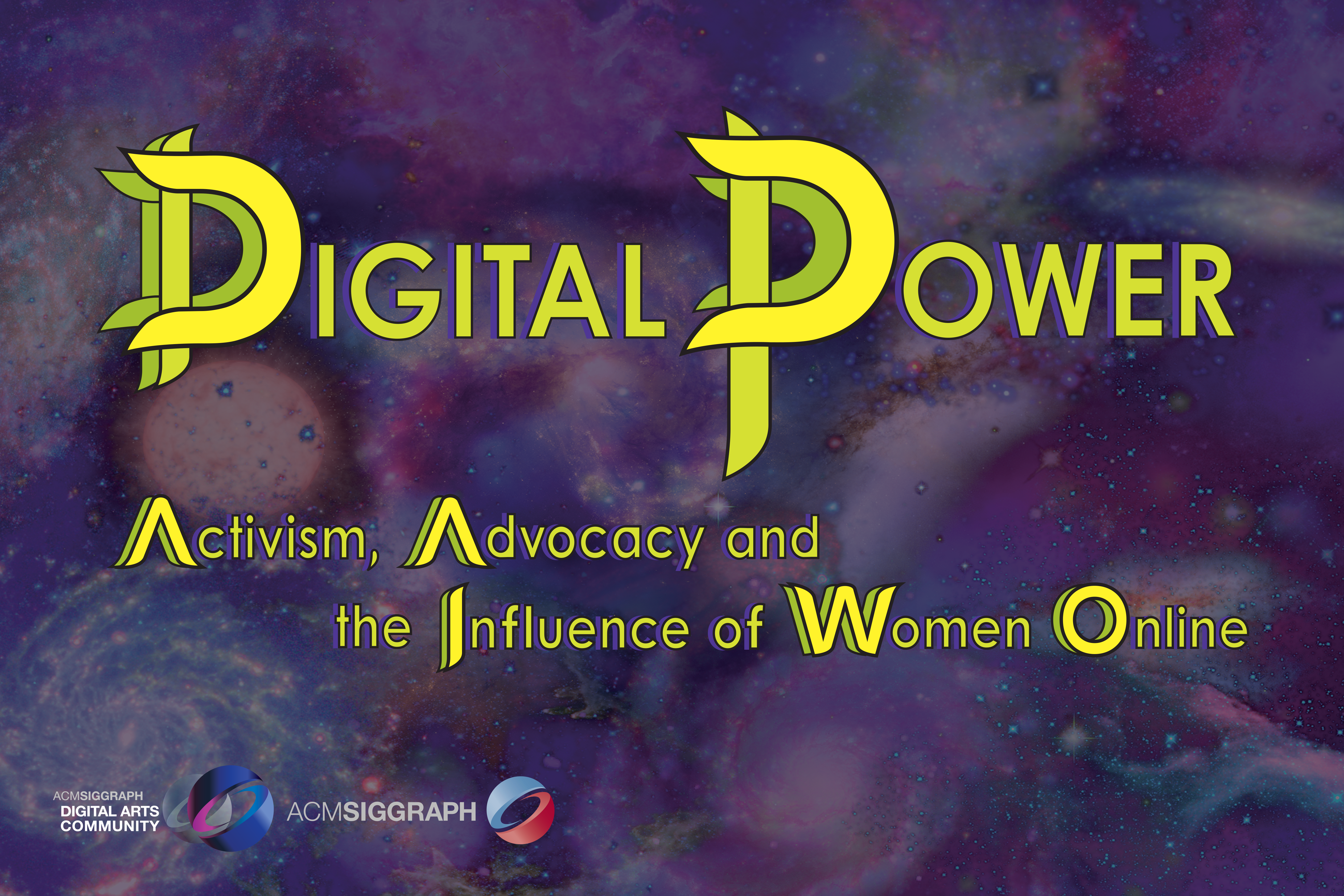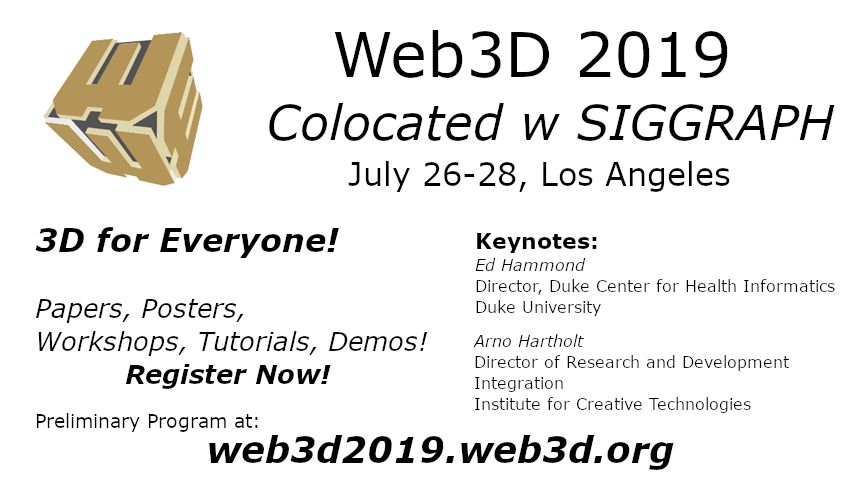ACM SIGGRAPH International Conference on Virtual Reality Continuum and Its Applications In Industry (VRCAI 2019) (co-located with ACM SIGGRAPH Asia 2019)
Venue: Griffith University, Brisbane, Australia Date: 14-16th November 2019 Website:http://vrcai.acm.org
==================================================================
On 14-16th November 2019 the 17th ACM SIGGRAPH International Conference on Virtual-Reality Continuum and its Applications in Industry (VRCAI 2019), will take place just before SIGGRAPH Asia 2019 (17-20th, Dec) in Brisbane, Australia. We welcome submissions on the following main themes:
VRC Fundamental and Related Technology in Computer Graphics, VRC Systems, Interactions, Virtual Storytelling, Virtual Production and Industry Applications in the VRC.
Topics of interests include (but are not limited to):
FUNDAMENTALS · Ubiquitous VR/AR/MR · Intelligent VR/AR/MR · Distributed and Collaborative VR/AR/MR · Machine Learning for VR/AR/MR · Robotics and Tele-Presence · Aural, Haptic and Olfactory Augmentation · Geometrically, Physically and Image Based Modeling · Real-time Visual Tracking and Registration · 3D Modeling, Interpretation and Reconstruction · Multi-resolution and Multi-scale Methods · Level of Detail, Model Compression and Simplification · Networking, Streaming, Cloud, Latency and Bandwidth Methods · Real-time Rendering, Image-based Rendering, and 3D Auditory · Rendering and Visualization of Large-scale Models · Procedural, Physically-based or Data-driven Animation · Avatars and Virtual Community · Metaverse · Immersive Virtual Environments
INTERACTIONS AND INTERFACES · Collaborative and Interactive Virtual Environment/VR · Multimodal Interface · Visual Interface · Speech Interface · Haptic/Tactile Interface · Natural Interface · 3D Enabled Devices · Interaction Design · Sketch-based interfaces · Social and Interactive Computing and Media · Interactive Graphic Design · Interactive Sound Design · Human Factors and Ergonomics
SYSTEMS · Clustered VR · High Performance VRC Computing · Large-scale Simulation · Immersive and Semi-immersive Systems · Projection and Display Systems · Active and Passive Stereo Systems · 3D Scanner, Digital Mock-up and Reverse Engineering
APPLICATIONS · Aerospace · Architecture, Construction and Building · Arts and Film · Education, Virtual Classroom and Learning, and Training · Engineering and Design · E-Commerce · Video Games/Entertainment/Location Based Entertainment . Virtual Storytelling and Virtual Production · Visualization · Geology, Geography and GIS · Life Science, Medicine and Healthcare · Manufacturing · Transportation and Logistics · Fashion
We invite original and unpublished submissions of full Papers (8 pages) or short Papers (4 pages). All accepted papers will be published in the VRCAI 2019 Conference Proceedings and included in the ACM digital library (EI-indexed). All accepted papers will be presented at the VRCAI 2019 Conference.
Selected papers will be recommended for submitting an extended version in special section of the following journals:
Computers and Graphics (Elsevier, SCI-indexed). Computer Animation and Virtual Worlds (John Wiley, SCI-indexed).
IMPORTANT DATES Paper Abstract Due (Optional): 3rd September 2019 Paper Submission: 18th September 2019 Posters/Demos Submission: 25th SeptemberPaper Acceptance Notification: 1st October 2019 Camera-ready Paper: 8th October 2019 Conference: 14-16th November 2019
Industry Track:
Non ACM Digital Library publication industry program information can be found here, https://vrcai.siggraph.org/program/industry/
Program Chairs
Kenny Mitchell (Disney Research and Edinburgh Napier University)
Takuji Narumi (University of Tokyo)
Mashhuda Glencross (University of Queensland)
Industry Chairs
Ken Anjyo (University of Wellington)
Eugene Ch’ng (University of Nottingham, China)
Ayumi Kimura (University of Wellington)
Demos Chairs
Tim Marsh (Griffith University)
Sandy Ressler (NIST)
Posters Chairs
Jenny Vuong (University of New South Wales)
Ulrich Engelke (Data 61, CSIRO)
Conference Chairs
Joaquim Jorge (INESC / ID & Univ Lisboa)
June Kim (University of New South Wales)
Herman Van Eyken (Griffith University)







